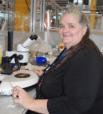

Showing 101 - 120 of 406 results


Do you really know where your food comes from?
Meteorites from the red desert of Australia support search for life on the red planet Mars
Monash University, University of Queensland and Australian National University researchers have used ANSTO’s Australian Synchrotron in their study of meteorites found on Earth that could be used in future to find evidence of life on the planet Mars.
Graduate Profile - Robert Walwyn
With zero carbon emissions, green hydrogen is a promising fuel for many industries. PhD candidate Robert Walwyn, is researching new, advanced materials for safe and effective hydrogen gas storage.

Role at ANSTO
CORIS360® advanced radiation imaging solution
CORIS360®: The world's most advanced radiation imaging system
Hackathon success continues
ANSTO-nandin hackathon teams have combined skills using science and business innovation in three successive events.
12,000 year temperature record
A new continuous record of temperature dating back 12,000 years provides an import resource in understanding current and future climate changes,

What are radioisotopes?
Radioisotopes are widely used in medicine, industry, and scientific research. New applications for radioisotopes are constantly being developed.
Early drawings reveal their secrets under x-ray examination
Tuning thermomechanical properties
Wombat used in study that showed tuneable thermal expansion by controlled gas sorption.
Science supports species survival by tackling contaminants and developing ingenious approaches

Highlights - Cultural Heritage
Over the last decades, neutron, photon, and ion beams have been established as an innovative and attractive investigative approach to characterise cultural-heritage materials.
Australian Synchrotron supports important palaeological cave art study in Borneo
Powder diffraction and X-ray fluorescence microscopy support investigation of pigments in rock art.

Role at ANSTO

Aerosol Sampling Program
ANSTO plays a leading role in measuring and characterising fine particles from a range of locations around Australia and internationally.
Preventing catastrophic failure in lithium ion batteries
Progress on hydrogels
Research confirms heating can increase strength of a type of hydrogel.
Advanced refrigeration technology on the horizon
Atomic mechanism produces colossal cooling effect in new class of materials .

Infrared microspectroscopy
The Infrared Microspectroscopy beamline combines the high brilliance and collimation of the synchrotron beam through a Bruker V80v Fourier Transform Infrared (FTIR) spectrometer and into a Hyperion 3000 IR microscope to reach high signal-to-noise ratios at diffraction limited spatial resolutions between 3-8 μm.